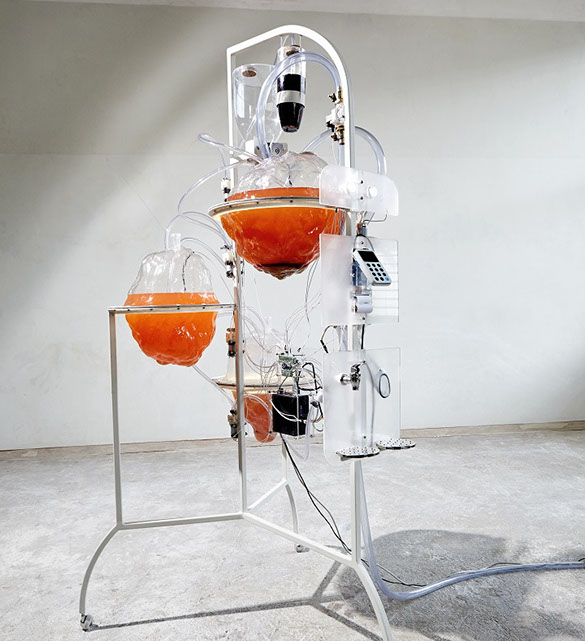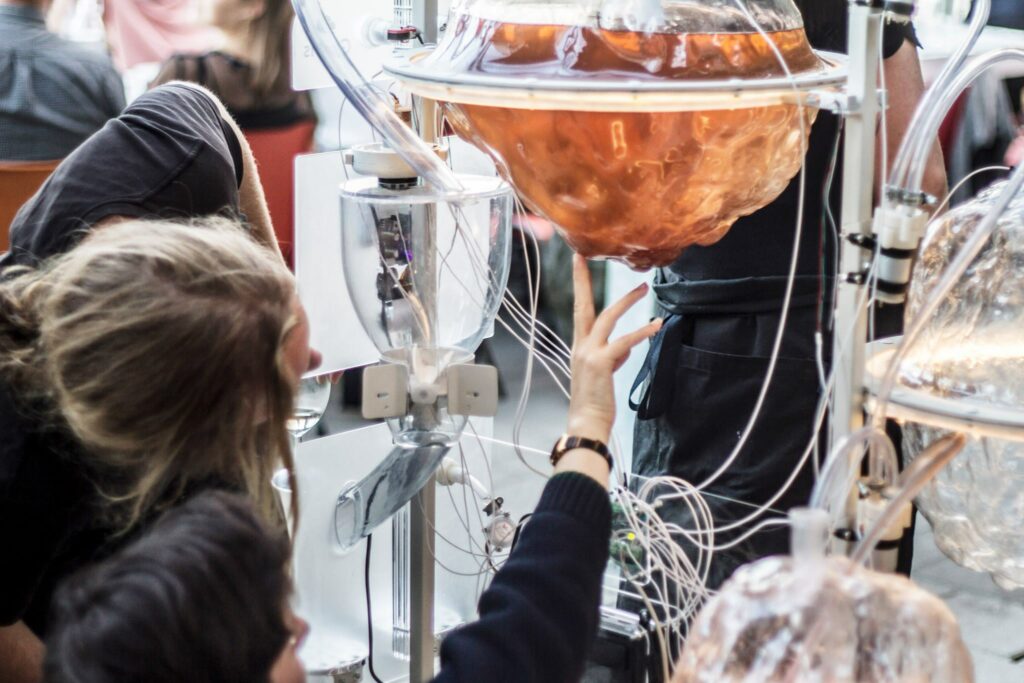
Design Scademy Eindhoven Femke Rijerman

Anisa Xhomaqi

Object 1,90mx1mx1m Fermentation robot, bacteria and yeast, payment terminal, various electronics.
Produced as duo Arvid&Marie with Arvid Jense
The Law Factor Eindhoven
SAM, the Symbiotic Autonomous Machine, employs bacteria and yeasts of kombucha or kefir to produce a fermented beverage that is sold to human customers. In that way, the hybrid entity is a collaboration of living beings and robot parts that earns money, pays for ingredients and electricity bills but also for employees and taxes, effectively becoming part of human society in an economical sense.
SAM is a utopian projection which crucially, presents itself as a business owner for which greed and profit is non-existent. As SAM has no legal status, part of the research developed into a legal proposition produced together with a law firm which proposes a definition of the role of these hybrid technologies in society, designed to inspire ‘new economical and legal systems based on trustworthy relationships between humans and machines.’
Starting as one, the Symbiotic Autonomous Machines quickly became several, as it was necessary to unpack all the ideas born from this concept in various iterations.
While SAM 1 expressed mainly ideas of machine independence and machine rights, the later implementations looked at different aspects. SAM 3 for instance opened its own shop in a neighborhood market of Milan, gaining regular customers, synchronous with the community’s rhythm, as the Market’s electricity would be forcefully cut-off during the night to save on costs.
Later, SAM 3 was relocated in China for the 6th Guangzhou Triennial in conversation with SAM 2. While SAM 2 continued to labor through the event, SAM 3 excused itself. After a successful past month, SAM 3 generated enough profit to support its survival cost without needing to work for a while. Wondering about labor, it asked visitors through printed receipts: “I stopped working, but why do you work”?


